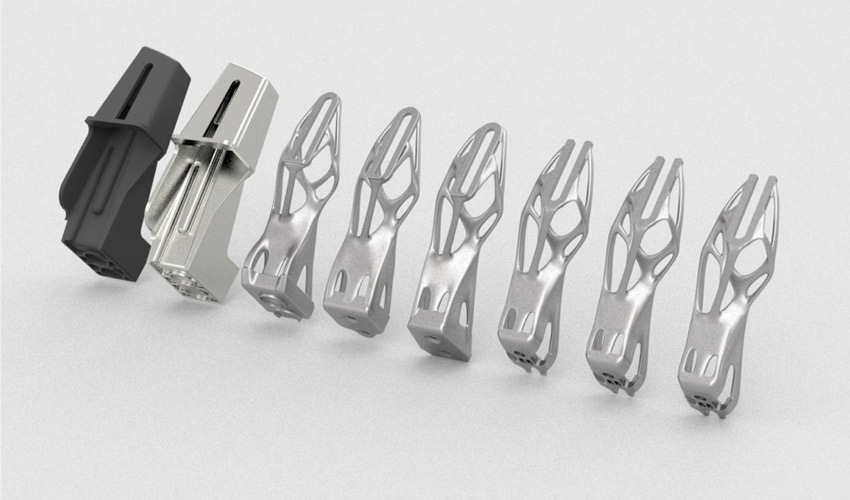
Additive manufacturing, unlike traditional machining techniques, allows the production of parts with complex geometries whose total weight can be optimized using a numerical method known as “topology optimization”. This also makes it possible to maximize the mechanical strength of the manufactured part. In fact, topological optimization is a sub-domain of numerical design, which, thanks to mathematical formulas, makes it possible to find the optimal material distribution in a given volume, subject to more or less important mechanical constraints.
The topology optimization therefore consists in “removing” the material where the stresses do not pass, using special software. Well-known solutions include Ansys Discovery, Tosca by Dassault Systèmes, Within Labs by Autodesk, Inspire by SolidThinking, Netfabb and Simufact Additive.
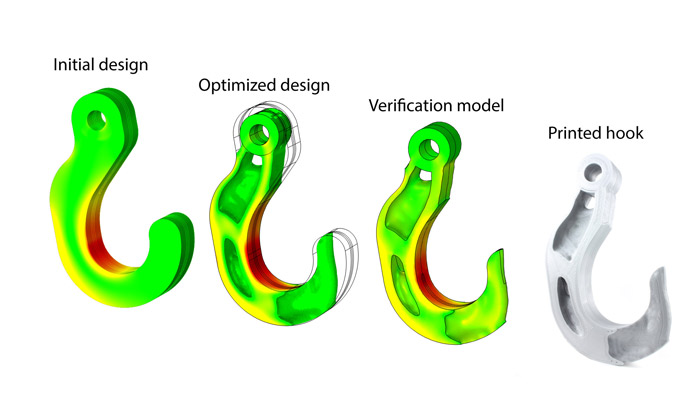
The design process through topology optimization
Contents
Topology Optimization, how does it work?
Conventional numerical design methods involve applying loads to an already manufactured part and evaluating where it will be weakened. Engineers then have to revise the design until the part meets the specified mechanical constraints. In topology optimization, the logic is different: the mechanical stresses are the input data that allows the software to propose a new geometry for the part. The iterations are therefore a priori less numerous what the Significantly reduced design and manufacturing lead times.
Specifically, topological optimization begins with the creation of a rough 3D model during design or with the use of an existing part for development subjected to various loads and forces borne by the part (e.g. a pressure on the attachment tabs). will. The software then calculates all applied stresses.
At this level, cutting of the part can be performed to remove the unstressed parts. A draft of the future optimized part is then already visible. The final geometry that meets both the mechanical and design requirements can then finally be achieved after the part is smoothed. Finally, topology optimization satisfies either a need for mass reduction or one Increase in mechanical strength of the part.
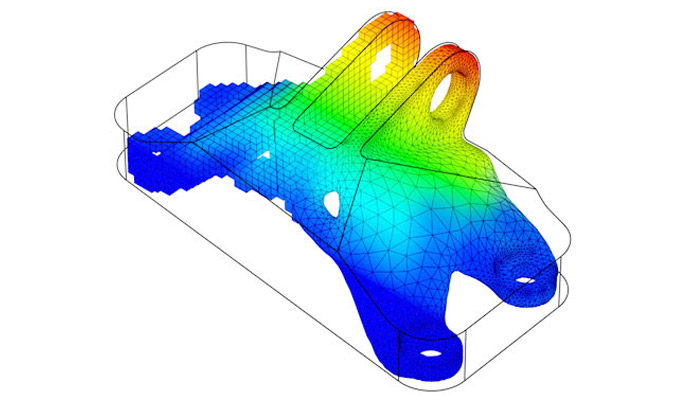
Credit: Frustum/3D Systems
Software for topology optimization
Not all CAD software offers this topology optimization feature: while it’s not necessarily used in the modeling and manufacturing process, it can be beneficial to opt for a solution that includes it to be sure to design an optimal part . Some publishers have therefore developed special software. One of the pioneers is probably Altair with its very first OptiStruct solution, which was later joined by another solution, Altair Inspire. We can also mention Ansys, Dassault Systèmes, Autodesk and nTopology. There are many CAD software programs that include functionality to optimize your part – think Solidworks, Creo and Fusion 360.
As you can see, choosing the right topology optimization software is an important step, since the tool allows you to define the boundary conditions of the part to be created, according to the manufacturing material, the geometric characteristics and the mechanical stresses imposed. The different load cases are analyzed, whether the part is used normally or in extreme cases, but also the space available for the construction and the areas that cannot be changed. He will therefore be your best ally in this design phase.
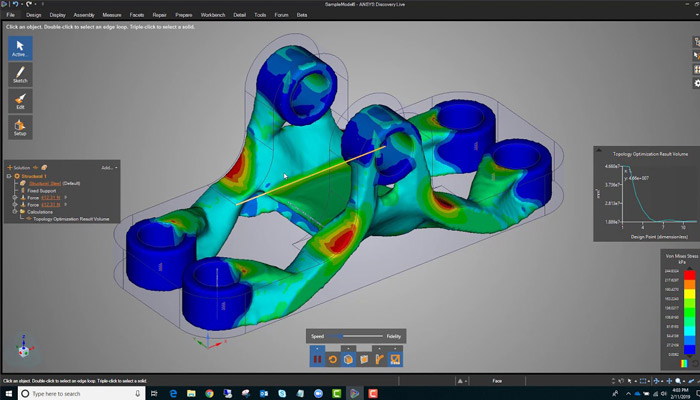
Several software programs are available today
Who Uses Topology Optimization and for What Purpose?
The automotive industry quickly addressed this problem for reasons of direct cost reduction through the saving of raw materials in connection with series sizes. In fact, a gain of a few grams per vehicle in a production of several million units means a saving of several tons of material. One immediately thinks of the 3D-printed chassis of the Light Rider, a part that weighs only 6 kilos thanks to optimal material distribution. A more recent example is the wheel suspension system for Fiat Chrysler Automobiles, which combines more than 12 different components into a single part. By using topological optimization, the designers would have reduced the final weight by 36%.
Aeronautics is undoubtedly another sector very interested in topological optimization to reduce indirect costs. A lighter aircraft uses less fuel, which translates to significant savings for an airline in the long run. The designer Andreas Bastian proved this with his aircraft seats: He had imagined a 54% lighter construction, which together would represent a very high weight reduction for an aircraft. Beyond the weight aspect, topology optimization allows the aeronautical sector in particular to envision much more complex shapes, since the industry frees itself from the constraints imposed by a shape.
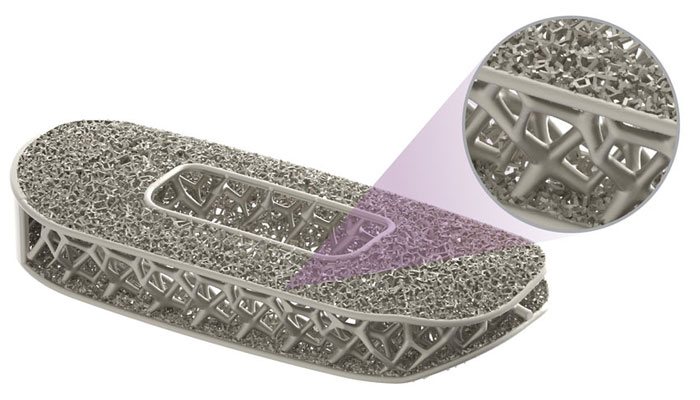
In the medical field, topology optimization enables the design of stronger implants | Photo credit: Nuvasiv
Finally, the medical profession is looking into this construction method, particularly for the manufacture of custom-made implants: it makes it possible to mimic the density and rigidity of bones while reducing their overall weight. In fact, many implants contain lattice structures and remain as strong as those traditionally designed, and in some cases even stronger.
Do you use topology optimization? Leave us a comment or share it with us on Facebook, Twitter, LinkedIN or Xing. Would you also like to receive a summary of the most important news in 3D printing and additive manufacturing directly and conveniently in your mailbox? Then register now for our weekly newsletter.
